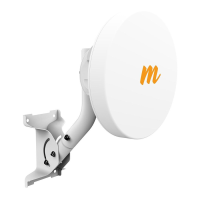Mimosa Client Help Content
Mimosa Clients Troubleshooting Guide
Copyright © 2014 Mimosa Page 90
Low Signal-to-Noise Ratio (SNR)
The signal-to-noise ratio (SNR) is the single most important indicator of link health. It represents the magnitude
difference between the Rx power and Rx Noise, which is positively correlated with the modulation coding scheme
(MCS) index. Up to a point, the higher the SNR, the higher the MCS and resulting throughput.
Troubleshooting Steps
Ensure that antennas are optimally aligned to achieve the highest Rx power value across the RF link.1.
Ensure line of site between radios is clear of obstructions that may block the Fresnel zone. Obstructions may2.
cause reflections/refractions that appear as noise.
Choose the clearest RF channel(s) available. Interference (noise) on the same frequency can increase PER3.
because the receiving radio does not have sufficient SNR.
Select narrower channel widths to increase spectral density.4.
Evaluate and adjust the Tx power. Tx power that is too low can result in low SNR, while Tx power that is too5.
high can result in distortion (saturation at the transmitter or receiver). Mimosa recommends setting the Tx
power to the level modeled in the Design application, and then making incremental changes up or down to
determine the optimal level (lowest PER, highest MCS).
Consider installing a higher gain antenna (A5c).6.
Related:
Client Troubleshooting: High PER - Troubleshooting steps for high packet error rate

